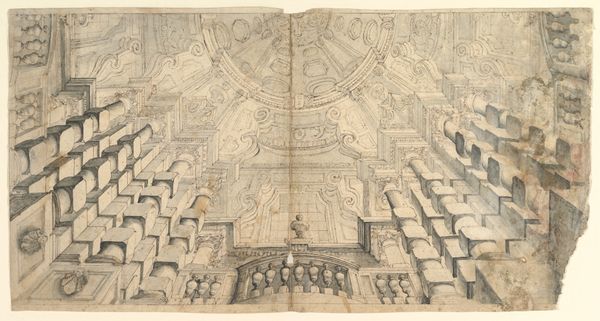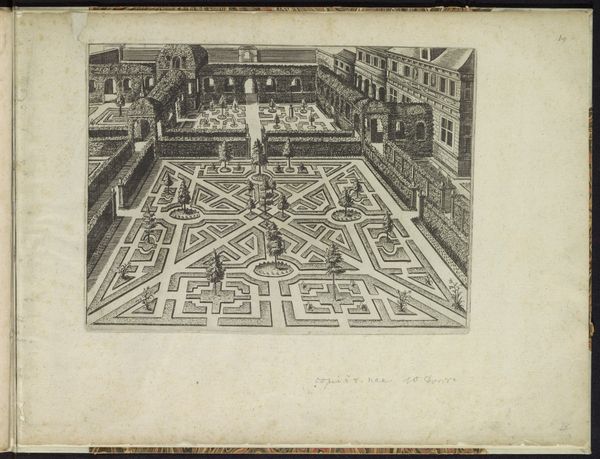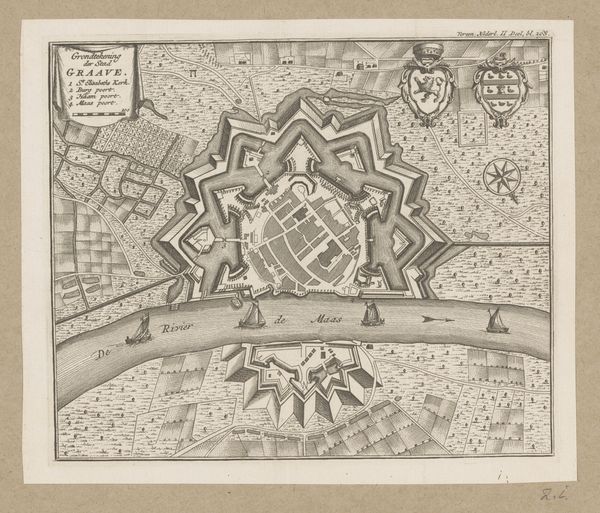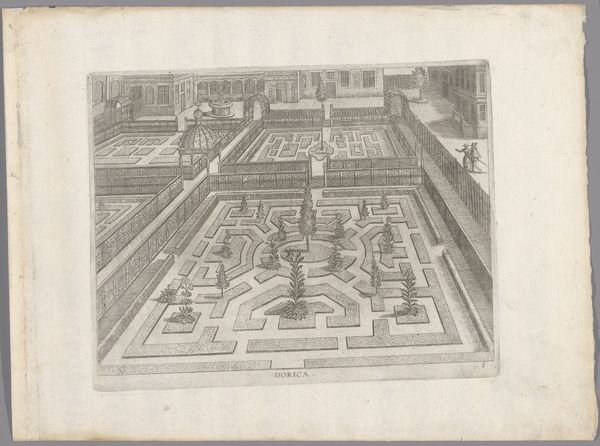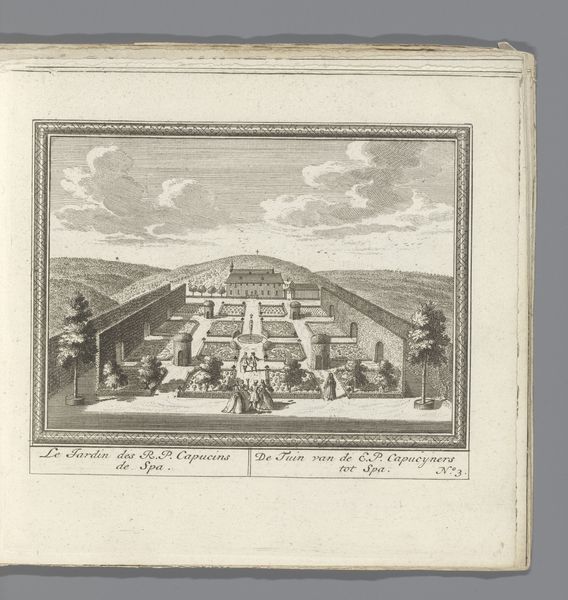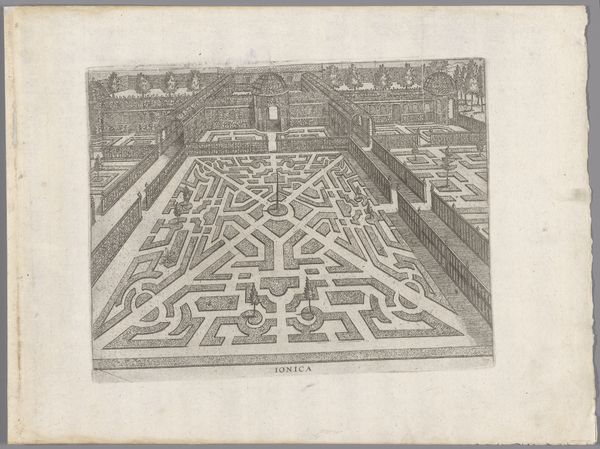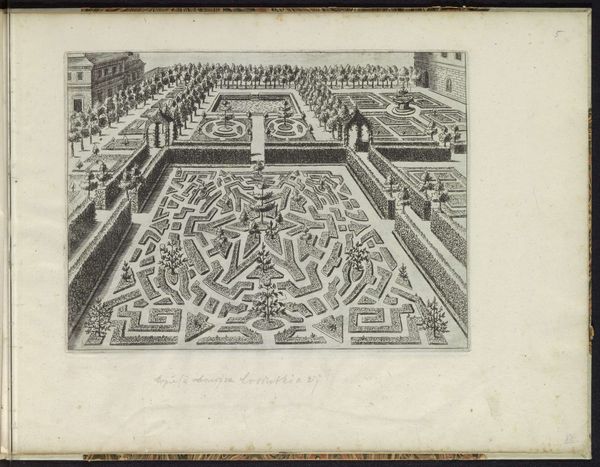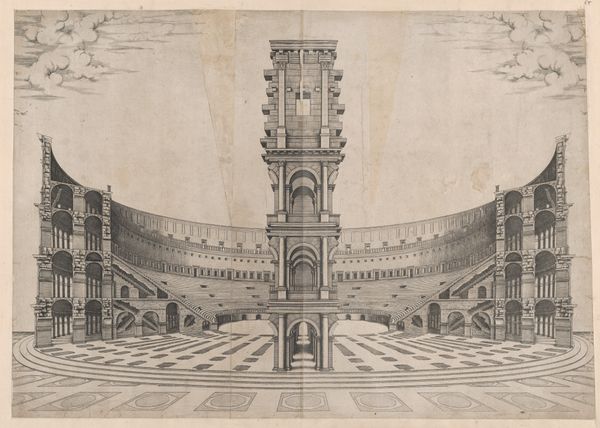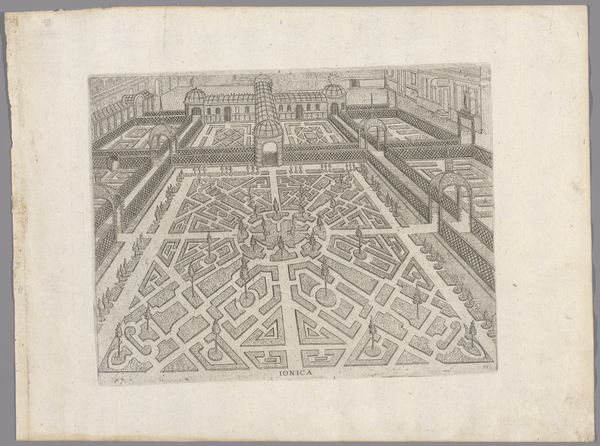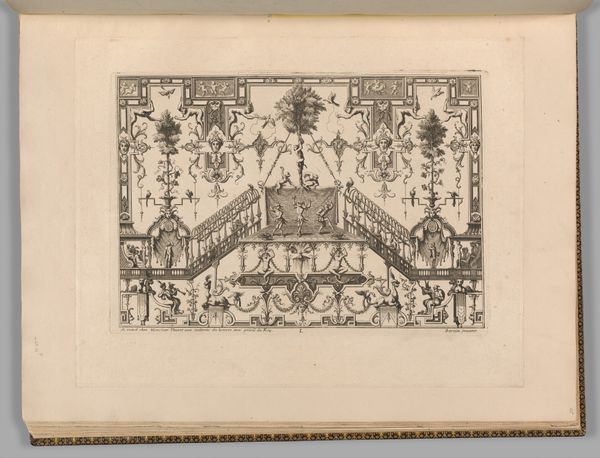
print, engraving
#
dutch-golden-age
# print
#
landscape
#
line
#
engraving
Dimensions: height 155 mm, width 214 mm
Copyright: Rijks Museum: Open Domain
Editor: This engraving from 1617 by Crispijn van de Passe II, titled "Tuinman met een gieter in een omsloten tuin" or "Gardener with a watering can in an enclosed garden", shows a formal garden. It's incredibly detailed. How do you interpret this work, considering its historical context? Curator: This print gives us insight into the social stratification of 17th century Netherlands. The formal garden, depicted with meticulous symmetry and order, represents control over nature, a privilege afforded to the wealthy elite. The gardener himself becomes a symbol of this control, enacting a carefully planned manipulation of the natural world. Editor: So, it's not just a pretty picture, it's about power? Curator: Precisely. Consider also the "enclosed" aspect of the garden. It signifies exclusion, the physical and social barriers that separated the privileged from the working classes who often toiled to create and maintain these spaces. What about the gardener's role strikes you? Is he just a neutral figure? Editor: I guess he's not. The act of watering almost seems like he's perpetuating this controlled environment. Maintaining the status quo? Curator: Yes, and consider the perspective: we are positioned to survey the garden, reinforcing a sense of ownership. This isn’t simply a representation of a garden, it’s a carefully constructed ideological landscape. Think about the labor conditions, the distribution of resources, and who benefits from this controlled image of nature. Editor: I see it now! It makes me wonder about the untold stories of the people who built and maintained it. Thanks for opening my eyes to this perspective! Curator: Absolutely! These images can unveil unseen narratives around social dynamics. By thinking intersectionally about the lives of people in the 17th Century we begin to uncover more.
Comments
No comments
Be the first to comment and join the conversation on the ultimate creative platform.
